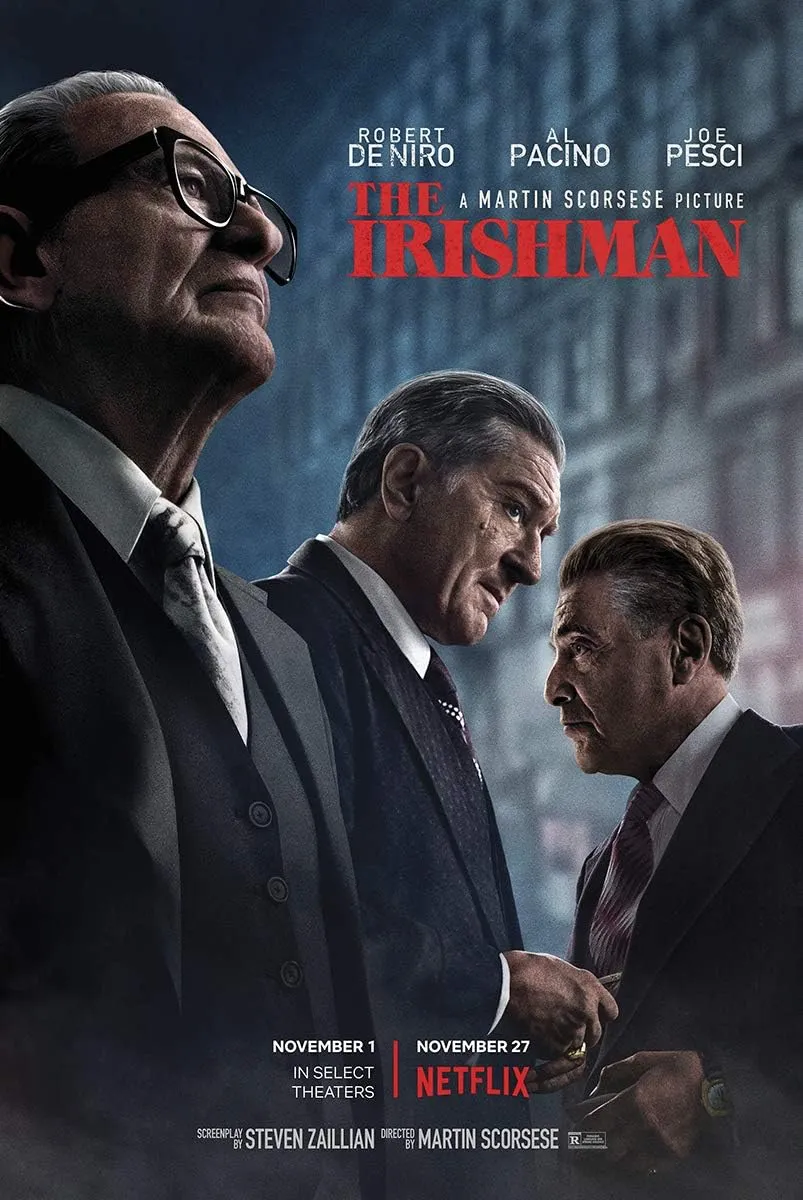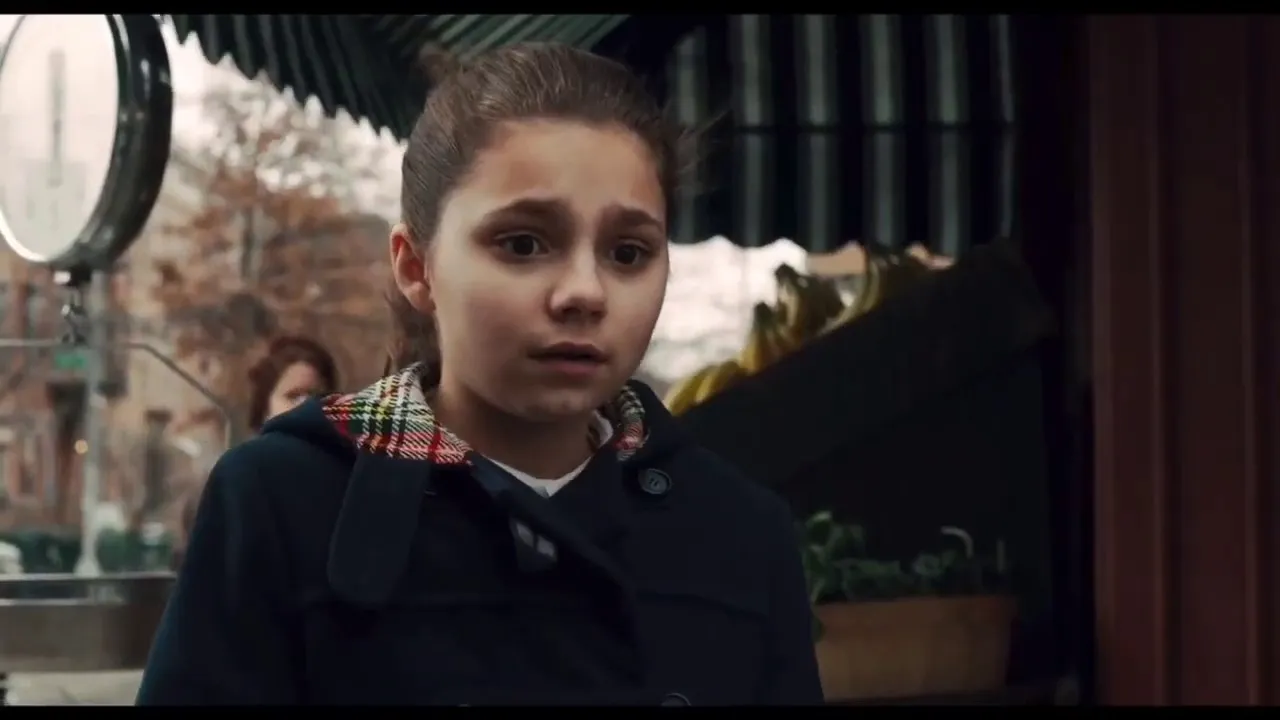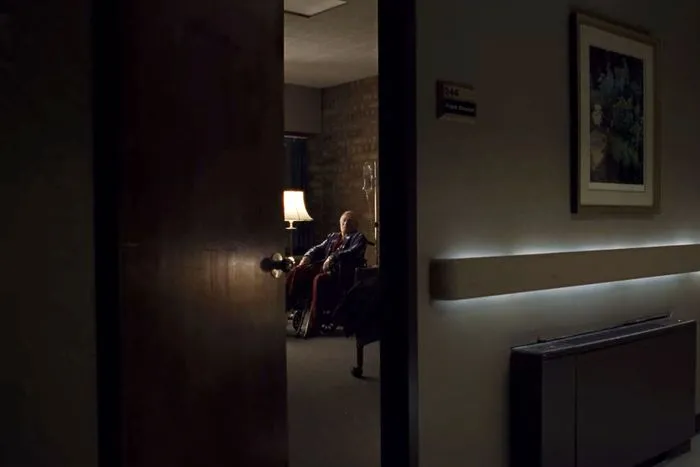
It will certainly contain spoilers, so those of you who haven’t seen it already, proceed with caution.
Alright, let’s get into it.
Scorsese is a technical director. It's not as if his films are devoid of philosophy, but he always relied on the craft more than the ideological statements the films carry underneath. But he doesn't tell you that outright.
He thinks in this way —
"The set pieces in “North by Northwest” are stunning, but they would be nothing more than a succession of dynamic and elegant compositions and cuts without the painful emotions at the center of the story or the absolute lostness of Cary Grant’s character."
Source- https://www.nytimes.com/2019/11/04/opinion/martin-scorsese-marvel.html
That doesn't mean he's discarding brilliant cuts and compositions. Let's put The Irishman under microscope here —
When at the eve of his life, Frank Sheeran (de niro) wants to select a place for his ashes to be buried, that scene is a one point perspective. These types of shots are usually used to manipulate the audience to a certain object, yet it also might be used to invoke uncertainty and fear. This is symbolic for sheeran who is about to die. Stanley Kubrick popularized the shot.

Source
Scorsese also used high angle shots and dolly-ins to introduce new characters which also served in a comical sense. In this case gallows humor or irony.
But using these tactics are nothing new in a scorsese film, as we have seen them many times, neither do they make a film great. Many films use these techniques knowingly, unknowingly, arbitrarily . So we have to go back to Scorsese's statement,
'Cinema of human beings trying to convey emotional, psychological experiences'.
Source - https://www.businessinsider.com/martin-scorsese-says-marvel-movies-are-not-cinema-theme-parks-2019-10
What Does He Mean?
In Irishman, Sheeran tries to tackle arrogant Hoffa and when he fails, Mob boss Russel (Pesci) orders his hit—’It is what it is’. The audience saw how mobster world works, their rules and cruelty and they also saw how hoffa and sheeran came closer. They saw how hoffa learned to get off of his pride horse and engage with sheeran on an equal level. Their family friendship. Sheeran began to act as an apologist for Hoffa.
The entire Hoffa killing scenes have subdued emotions and anticipations (Hitchcockian suspense to be exact).
Another instance would be Hoffa's wife, when she was fired and about to get into the car but hesitating, because she knew very well the car might go boom. The audience can relate to the created environment emotionally.
Only Emotion Won't Get You Far
But having emotional scenes don't make a film great either. Viewers don't get emotional logically. A random cat video can make us emotional. To make something emotional, one does not have to have good storytelling. But the heart of a Cinema is good storytelling.
Russels returns home, he is bloody. His wife sees him, understands everything immediately, then she asks her to put off his shoes before going up. This kinda visual storytelling indicates stories -
- As a mob boss's wife, carey knows what his husband does and has accepted them, even though she is not directly involved.
- Russel does this on a regular basis.
Also lets not forget foreshadowing on many scenes, like the one with crazy zoe's killer.
Even though this film was based upon real life events, it is essentially built upon the ‘three-act formula’, which itself is not bad on it’s own but became cliche due to being overused. Scorsese used multiple timelines to avoid it being a grossly three-act narrative.
Moreover, since this film is based upon a memoir and not a fictional story, we can see the absence of many mobster tropes. The Irishman is told from Frank's perspective. His emergence in the mob scene and rising the ladder. We can see his friends along the way but his personal lifestyle is not there. We don't see police rushing to every crime scene. We don't see his neighbors shunning his family. We don't see his first wife after their devorce, nor her reactions. We don't see Frank regretting. Peggy, Frank’s daughter, was the only link to normality.

source
I don't know whether Frank omitted these in his memoirs or Scorsese did it. This probably a deliberate tactic of the master filmmaker , because the point of the film is not glorifying mobster genre or to showcase crime drama once again. I will get into that later on.
Even if it was Scorsese's doing, the film wouldn’t be more slow or fast or more gangster like. Because the editing decisions are there.
Editing Examples
Hoffa and Fitz are fighting, their scenes are portrayed with montage, yet there are long uncut shots— opening long tracking shot
and another one when they killed Anastasia in the barber shop,
One for establishing the environment, the other one for dramatics.
The background music is great. The opening song, In the Still of the Night, gives off a melancholic vibe and in the end, it resonates with Frank's tragedy. No one will actually sympathize with Frank in a clear head but who would not do that in the film?
The acting is great. Although it is it's own art form, I will not go into it.
Why it is different (despite being generic)
Irishman is not just another Mobster film. It's actually a portrayal of getting old, being discarded, irrelevant. This is the central theme of the film. With getting every technical aspect of the art form work for it, the film portrays this idea magnificently. Hence, A great film.

ImageSource
Mobster setup is only there to support it. We don’t see Frank Sheeran regretting his life choices because more than he, more than the characters—WE, the audience are supposed to feel that immense feelings of melancholy, regret etc.
It can also be regarded as a metaphor for Scorsese's own life and life in film, hence a semi-autobiography. But that's. only my speculation. It's not official.
Yeah man... but that de-aging though…
Well, yes, I won’t deny it looked horrible. It is also the state of art technology available. I’ve seen VFX experts describing the screen, all are in awe—how the heck they’ve achieved it! See one such reaction here
Still… it looks pretty bad. True enough. And when Pesci calls Niro ‘Kid’, I cringed too.
However, having great VFX is NOT really an important check-mark for a film to be held high as an art piece. You can name countless good ones with bad graphics, can’t you? Same goes for horrible films with shiny vfx too.
Sure, it helps the viewer to get more intimate with the film but sometimes it can also be a distraction. If you ask me, I wouldn’t put much importance on it.
Before I finish this, I want to address something else. The Irishman might be a great deal of cinema in this day of franchise blockbusters but I’m not suggesting it is superior to 70’s gems like the Godfather or Scorsese’s other masterpiece, Goodfellas.
But in their league? For sure.
Thanks for reading. 😊
I'm up for discussion of any sort regarding this film if you feel like I've misjudged.
I will see you in my next post.